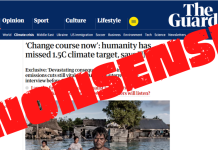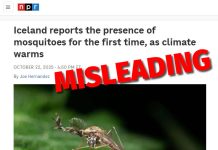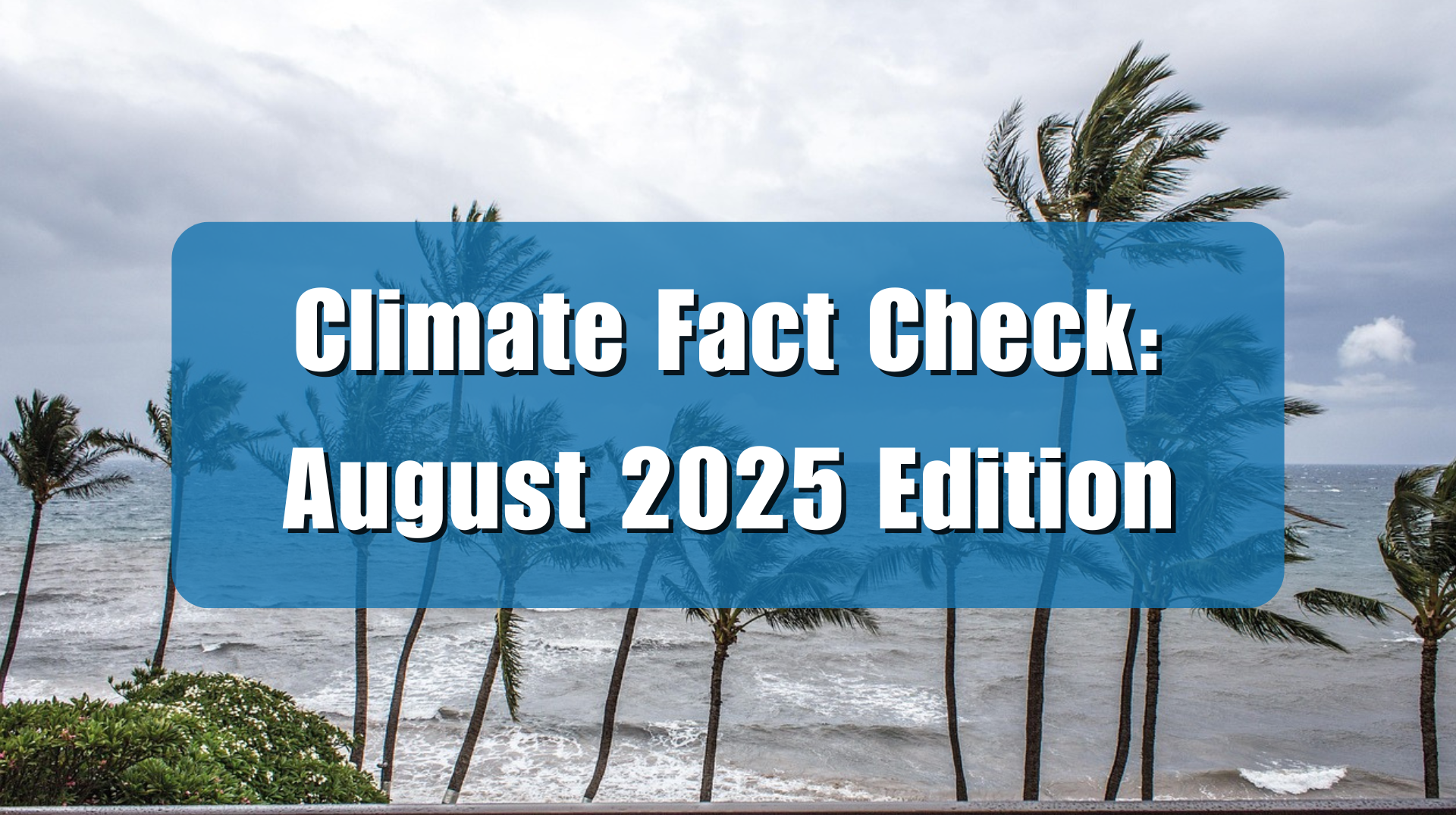H. Sterling Burnett contributed to this report.
The U.S. Public Broadcasting Service’s (PBS) program, NewsHour, hosted an interview in which they claimed extreme weather, like droughts, floods, hurricanes, and heat waves, are becoming more severe as a result of climate change, citing the new “Climate Change 2023” report from the Intergovernmental Panel on Climate Change (IPCC) as evidence. The claim is false, no matter how many times it is repeated. Data refuting this claim is easily available to those who care to look for it. Indeed, there is no new science presented in the IPCC’s 2023 report, rather it refers back to the “IPCC Sixth Assessment Report, Working Group 1: The Physical Science Basis,” and the science there refutes the alarming claims made in the 2023 IPCC report and on the NewsHour.
The NewsHour segment titled, “UN scientists warn drastic steps needed to prevent climate change catastrophe,” consists of an interview between PBS NewsHour hosts, Geoff Bennett and Amna Nawaz, and Katharine Hayhoe from Texas Tech University, the chief scientist for the environmental group Nature Conservancy, discussing the IPCC’s Climate Change 2023 report.
The segment begins with an ominous warning, saying:
Scientists warned that human-induced climate change is warming the planet to the point where it is causing irreversible damage in some parts of the world.
. . .
The new report from the United Nations Intergovernmental Panel on Climate Change, or IPCC, found that, within a decade, the world is likely to miss its goal of holding global warming to 1.5 degrees Celsius or 2.7 degrees Fahrenheit.
If or when the planet reaches that level, scientists say Earth will pass tipping points that will lead to catastrophic environmental damage, including dangerous sea level rise, entire species going extinct, and even greater suffering in many nations, especially the poorest.
There is no evidence that any tipping point leading to a climate disaster exists, at all, much less that some magic threshold or point of no return will be crossed if the Earth surpasses a 1.5℃ rise in average temperature above pre-industrial levels. Citing hard data and real world evidence, Climate Realism has discussed this fact repeatedly, here, here, and here, for example.
Even Hayhoe acknowledges this fact, correcting Nawaz saying, “[o]ne-and-a-half degrees is not a magic threshold or a tipping point. Rather, it is a goal that we have set ourselves, knowing that the science is very clear. Every bit of warming matters.”
Later, Hayhoe pushes the decidedly unscientific idea that “we have always had droughts and floods and hurricanes and heat waves. But, in a warming world, they’re getting stronger and more dangerous.” Real world data and the IPCC’s 2021 Physical Science report refute this claim.
Despite the fact that media and activist-scientists like Hayhoe broadly claim that “drought” is getting worse, the IPCC makes a much more nuanced claim. It divides drought into four categories. Only two of those four have detectable and attributable trends, according to the IPCC; ecological drought, and agricultural drought.
The definition of agricultural and ecological drought, found in the IPCC AR6 Working Group 1 report’s glossary, is this:
“Depending on the affected biome: a period with abnormal soil moisture deficit, which results from combined shortage of precipitation and excess evapotranspiration, and during the growing season impinges on crop production or ecosystem function in general.”
The other kinds of drought are: Hydrological, which deals with groundwater and deficits in rivers, lakes, and reservoirs; Meteorological, which deals with a precipitation deficit.
The IPCC report says that the latter two forms of drought have seen no detected or attributable trends.
As Climate Realism previously reported , even the IPCC’s claims about changes in agricultural/ecological drought are limited and speculative. The IPCC divides the world into 47 separate regions of study when analyzing drought trends, and its data suggest ecological and agricultural drought may have increased during the period of modest warming in 12 of those 47 regions. However, in only two of those regions does the IPCC have even “medium confidence” for any human role in the observed increase. For the remaining regions experiencing a possible increase in droughts, the IPCC has low confidence human activities have had any discernible impact.
The claim that incidences of flooding are increasing or more severe is simply false. The IPCC AR6 physical science report, which the 2023 synthesis report is supposed to be based upon, confirms that there is no detection or attribution of any trend for flooding. This is consistent with previous reports, as discussed in Climate at a Glance: Floods. Peak flow trends are increasing in some regions of the world, and decreasing in others.
Hard data on hurricanes and tropical cyclones (TCs) likewise refute the claims made by in the PBS report. The IPCC says there is “low confidence in most reported long-term (multidecadal to centennial) trends in TC frequency-or intensity-based metrics,” and publicly available Accumulated Cyclone Energy (ACE) data. (See figure below)
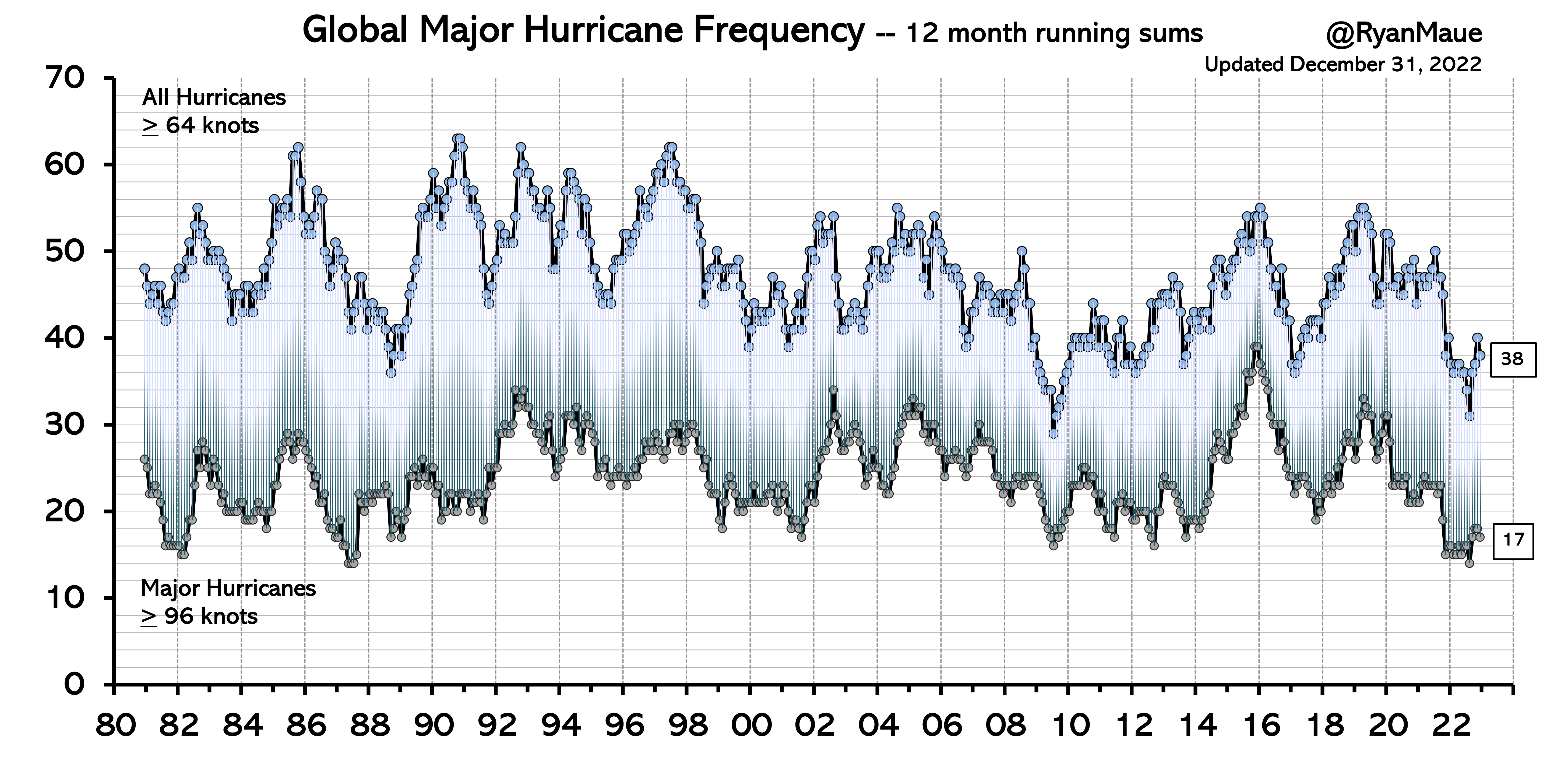
As climate scientist Roger Pielke, Jr. discusses in his detailed substack post, “How to Understand the New IPCC Report: Part 2, Extreme Events,” the IPCC report downplays the best available hurricane data, seemingly trying to give an “out” to alarmist claimss, but the data is available regardless and hard to dismiss.
Once again, citing hard data, Climate Realism has repeatedly refuted the assertion made by Hayhoe that hurricanes are “getting stronger and more dangerous,” for instance, here, here, and here.
While the IPCC report asserts that “[i]t is virtually certain that there has been increases in the intensity and duration of heat waves and in the number of heat wave days at the global scale,” this is not consistent from region to region. IPCC says that those particular trends “likely occur in Europe, Asia, and Australia.”
Despite the alleged “likely” or “virtually certain” increases in heatwaves claimed by the IPCC, recent studies have shown the number of people suffering the ill effects of climate-related events like heatwaves has plummeted over time. (See figure below)
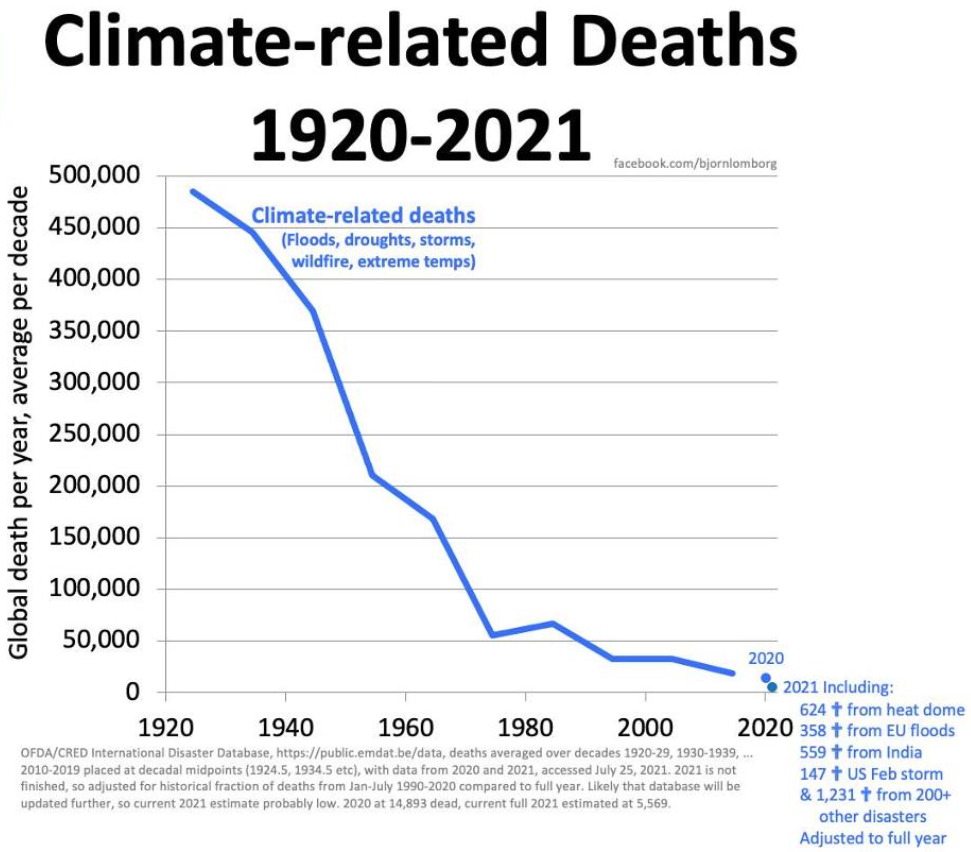
The interview’s final falsehood comes when Nawaz asks Hayhoe if current predictions about future warming scenarios could also be wrong, since previous ones were. Hayhoe first insists that “previous predictions were not wrong,” which is verifiably false as discussed here, here, and here, for example.
Hayhoe then said that before the Paris Agreement in 2015, “the world was heading towards a future that was between four to five degrees Celsius warmer than today,” implying that climate change agreements like the one in Paris have had some significant impact. This is false on two fronts. First, as Hayhoe is well aware the four to five degree Celsius claim is based upon the thoroughly debunked RCP 8.5 scenario.
Second, when Mauna Loa Carbon Dioxide CO2 data from Scripps Institution of Oceanography at UC San Diego is overlain with climate agreements, it demonstrates that there has been no noticeable impact of various climate agreements on the steady rise of atmospheric CO2.
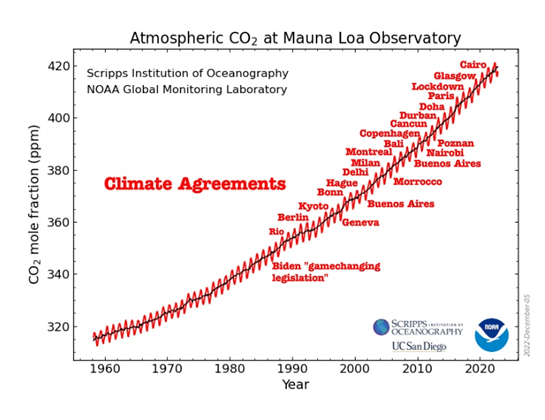
Warming and CO2 emissions continue, unabated, regardless of intergovernmental climate agreements.
The Summary for Policymakers in the IPCC’s 2023 Synthesis report is fraught with alarmist messaging, but no new science. Although the more science-focused Working Group reports are much more cautious, detailing areas of uncertainty, they also display their share of biases and problems. The PBS segment was a shameful work of propaganda. Overall, Earth is becoming a more hospitable place, not less, and the trends of most extreme weather events show no evidence that they are worsening in any measurable way.


